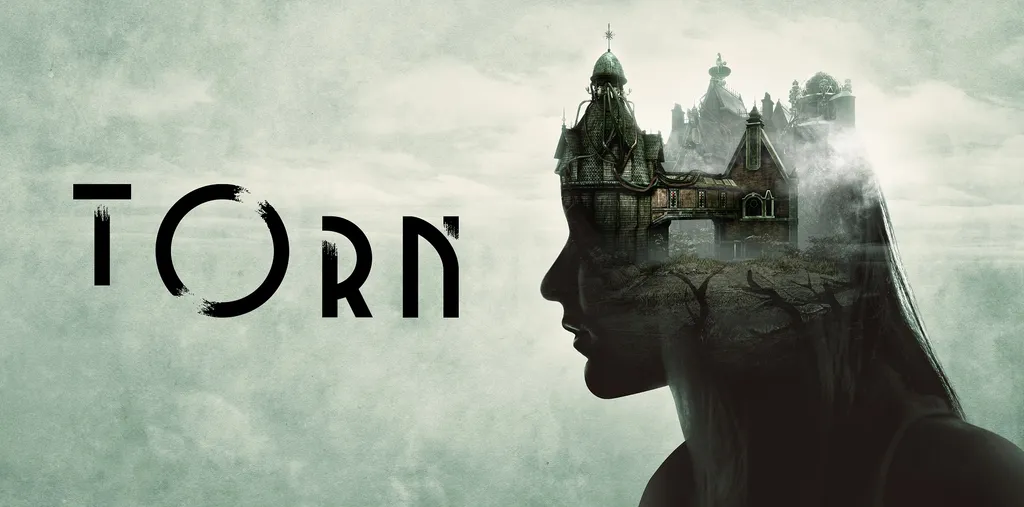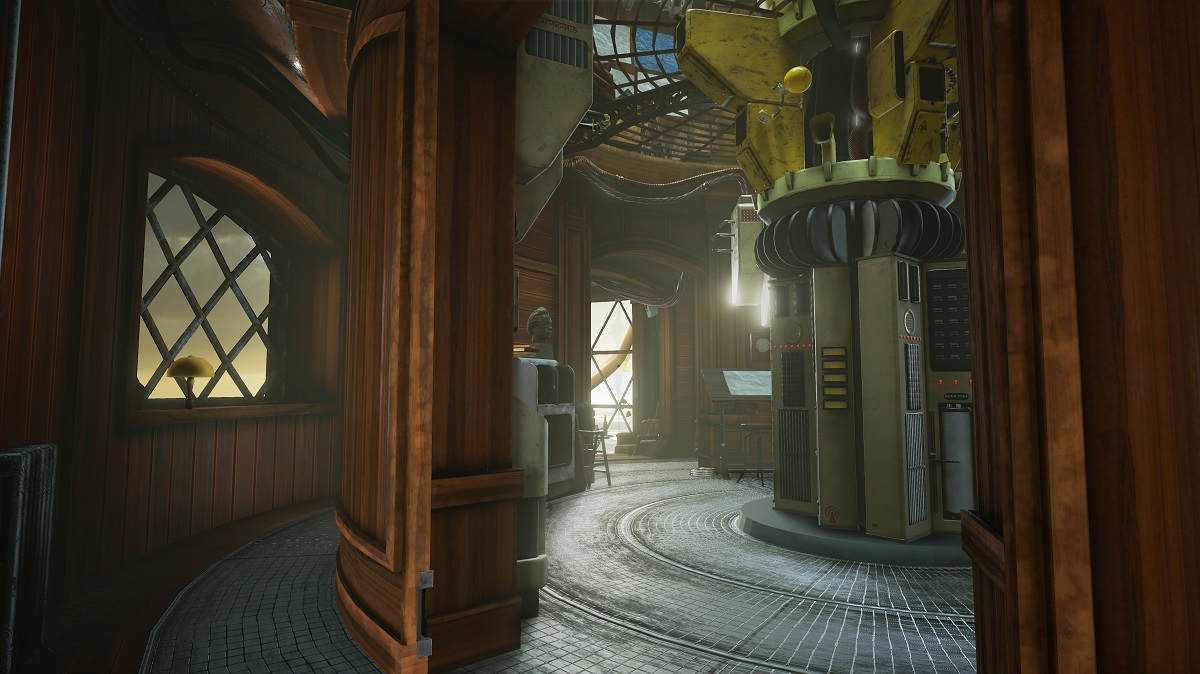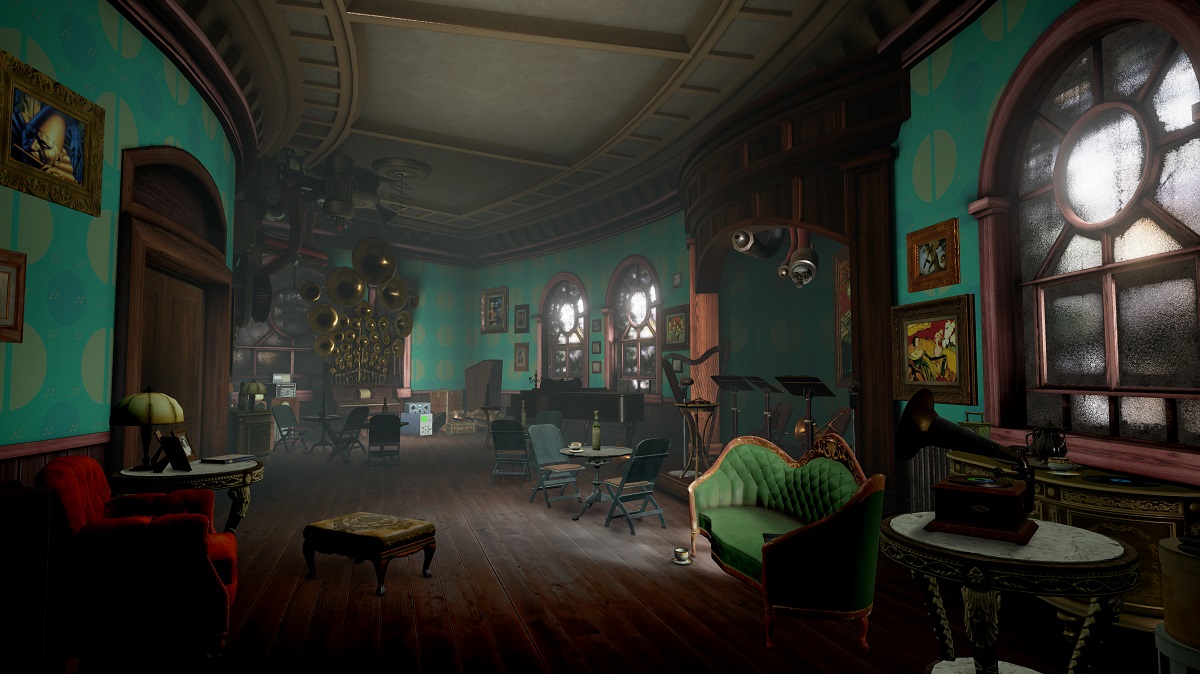“That is the most mad scientist thing anyone has ever said,” your character, Katherine Patterson, proclaims towards the end of Torn. She’s not wrong; from the physics-defying puzzles to the flustered confines of the mansion you explore, Torn itself seems born from the mind of crazed geniuses. Like all such inventions, though, it straddles a difficult line between ground-breaking and frustrating.
Torn is a puzzle game that takes you on a trip of continuous discovery. It’s a delightful tour of the endearingly barmy, eagerly ushering you from one room of its enormous mansion to the next as you pick up the pieces of Dr. Lawrence Talbot, a physicist that once managed to lose himself in his own mind and has been awaiting rescue ever since. Patterson is reluctant to help out, but the promise of personal gain pulls both her and yourself through the sprawling complex, connecting power circuits that allow you to temporarily visit Talbot’s twisted domain, restore some of his memories and learn how to bring him back to the real world.
Trying to keep up with Talbot’s memories, which are given physical form as a fairy-like floating light, is half the fun. He excitedly whisks from one set-piece to another, filling in the blanks about the portraits and paperwork that litter the rooms of the house and infecting you with his contagious enthusiasm. Torn has one of VR’s most authentic, lived-in environments and it steals the show. Each room is a fascinating new story waiting to be told, be it the reveal of a nursery in a house with no children, or simply a foyer that’s succumbed to the absurdly-large wires that snake around the building. Thick plumes of smoke will rise when you strike a couch with an object and items holding hidden memories will twitch and bounce with life when you highlight them. I’ve rarely been so intrigued to learn about every nook and cranny of the world I’m exploring.
Puzzles only fuel that intrigue. They don’t so much engage your brain as your curiosity, getting you to uncover wires buried beneath the surfaces of every room that form a circuit. You complete each circuit by locating symbols attached to objects around the room that correspond to the missing pieces of the wires, then use a gravity tool to put them in place.
It gets bonkers quickly as grandfather clocks are fastened halfway up walls and irons are stuck to ceilings. For the most part I was so entertained by how bizarre all of this was that it didn’t matter to me that each puzzle was essentially just following a list of instructions rather than actually challenging you in any way. The last 30 minutes, which ditch the circuitry-solving, are essentially just exploiting you as free labor.
A handful of these trials do trust you to solve them for yourself, though, and they’re good enough to make you want more of them. I wish developer Aspyr had put a little more faith in its generous hints system — which every VR puzzle game needs — and taxed your brain a bit harder, though I was relieved not to have any difficulty spikes slow the otherwise excellent pacing.
That said, Torn’s generous helping of crazy doesn’t always excuse its more mundane aspects, like the frequent trips to Tablot’s mindscape that feel half-baked. The visual iconography of talking to what appears to be a fluid, floating brain as you stand in the ocean of Talbot’s mind (which gets rougher the more distressed he becomes) is striking, but it’s often the case of too much telling and not enough showing. Torn is a talky game. At one point Talbot walks you through the minute inner-workings of his grandest machine, for example, even though it means very little to the player. The dialogue is sharp and the often-shaky relationship between Patterson and Talbot is certainly interesting, but simply listening to the former talk about his life with a lost love feels like a waste of time when you could be experiencing it.
It’s a bit infuriating, given that Aspyr clearly has such a firm grasp on so many other aspects of VR design and the game’s core themes seem ripe for possibilities within the medium. Talbot summons memories on a whim with Tilt Brush-like 3D models that provide a wistful window into a past life, but they only depict places and objects and never truly let you live the scene. The execution is barking up the right tree, just not loudly enough, and it’s at times damning enough to make you forget about the fact that Torn otherwise side-steps many of the issues other VR games encounter with ease.
Nowhere is that more telling than when the final revelation is made and, again, has to be explained in exact detail so as to make the slightest bit of sense. After such an engrossing six hours of adventure, it hurts to see Torn’s final minutes fall so flat, and it leaves the wider story feeling like a missed opportunity.
That’s too sad of a note to end on for a game that otherwise achieves so much, so let’s give special mention to the game’s visuals, which are particularly impressive. It’s not so much that Torn’s world looks believable as that it acts that way too. Every book, teacup and chair can be picked up and tossed across the room, and puzzles will often have you leaving areas in a hilarious state of disarray. It’s an excellent technical showcase for VR.
Torn is often an unexpected delight of a VR adventure, thrusting you into a world unlike any other and seizing your attention with its surreal house of ideas and unashamedly loopy puzzles. The sheer invention on display inside its gravity-defying mansion makes it as thrillingly curious as VR gaming gets, but its plodding exposition and largely simplistic puzzles can sadly undo a lot of the great work Aspyr put into the story and design. This is one of VR’s boldest adventures yet but, like the crazy scientist at its core, it doesn’t have all the answers.
Torn launches on Rift, Vive, and PSVR August 28th for about $29.99. You can find it on Steam, Oculus Home, and PSN. And check out these official review guidelines to find out more about our process.




























